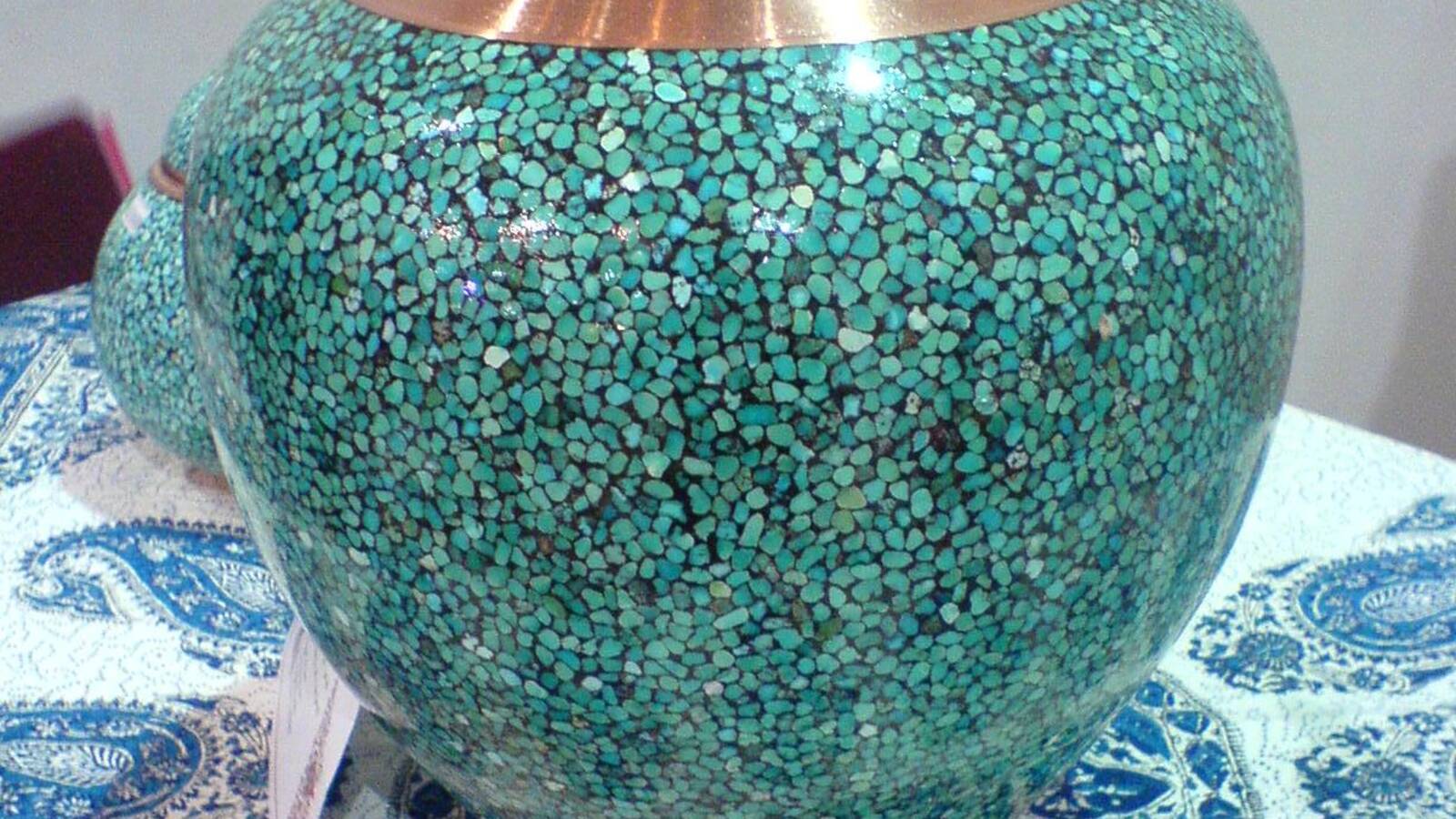IRAN ART EXHIBITION: TURQUOISE INLAYING HANDICRAFTS ARE GREAT AS A SOUVENIR
Inlaid turquoise is a kind of handicraft made by implanting small pieces of turquoise stone in mosaic fashion on the surface of the dishes, ornaments and decorative objects with copper, brass, silver or bronze bases.
Turquoise is rare and valuable in finer grades and has been prized as a gemstone and ornamental stone for thousands of years owing to its unique hue. In recent times, turquoise has been devalued, like most other opaque gems, by the introduction onto the market of treatments, imitations and synthetics. Turquoise Koobi is one of the newest arts that the use of turquoise and the art of picking these precious stones and polishing them is called turquoise.
Inlaid turquoise is one of the most beautiful Iranian artworks with a history of at least half a century. Iranian artists use turquoise in various forms of art including calligraphy and handicrafts. In Europe it is called turquoise. And it means Turkish stone, because the Iranian turquoise through Turkey was arrived to Europe. This ornamental stone is used in Italy as one of the most precious stones in jewelry.
The History of Inlaid Turquoise
IRAN ART EXHIBITION: The art of Firoozeh-koobi is putting small pieces of Turquoise stone on the surface of dishes and decorative objects. A royal beauty of the objects will be created after final polishing of turquoise stones. Firoozeh-koobi or Turquoise fixing consists of jewelries and containers made of metals such as copper, brass, silver, or bronze on which small pieces of turquoise stones are placed side by side with special glue. Firoozeh-koobi is a relatively young handicraft, and the history of it goes back to around 70 years ago. This kind of handicraft is produced in Isfahan.
According to experts, high quality turquoise is characterized by a dark blue color and less impurity streaks that are known as turquoise Ajami. To turquoise without streaks around the world is called Persian Grade, no matter where they are extracted. Various types of turquoise are available in different streaks that vary in color from green to dark blue, but the turquoise of Neyshabur with dark blue color is a criterion for valuation of turquoise all over the world and Neyshabur mine is the biggest turquoise mine in the world

Inlaid Turquoise Stages
This art is one of the newest arts that the use of turquoise and the art of picking these precious stones and polishing them is called turquoise. There are several important features in this art to create the best and most beautiful artwork, this art is not generally handicrafts of a particular city, but now Isfahan city is considered to be the activists of this art.
IRAN ART EXHIBITION: The pieces must be placed in a way so that no space is left between them as far as possible. In order to fill the possible gaps between Persian Turquoise pieces, temperature is added (to about 40o C) and some more shellac powder is sprinkled onto the pieces until the shellac layer is softened to a melting form, and then try to fill all the spaces by adding smaller Persian Turquoise pieces, or, as they say, the pieces sit well on the surface. This is usually done by pressing Persian Turquoise pieces by hand onto the surface so that they stick fast to it. After the object is cooled, the shellac covered parts become rigid. After that stage, the parts covered by shellac and Persian Turquoise pieces are polished with emery so the extra shellac and little raised parts of the pieces are flattened.
Examples of natural turquoise rock in this mine have been exhibited in geological and mineral museum of the world such as London Geological Museum and in Iran’s Tehran and Mashhad Geological Museum.






